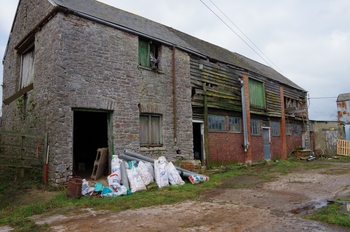Waddeton Barton Barns
Andrew Passmore, 2015. https://doi.org/10.5284/1029429. How to cite using this DOI
Data copyright © Andrew Passmore unless otherwise stated
This work is licensed under the ADS Terms of Use and Access.
Primary contact
Andrew
Passmore
AC Archaeology Ltd
Manor Farm Stables
Chicklade
Hinton nr Salisbury
SP3 5SU
UK
Resource identifiers
- ADS Collection: 1714
- DOI:https://doi.org/10.5284/1029429
- How to cite using this DOI
Introduction

A record of four barns was prepared prior to their conversion to accommodation. Three of the barns were constructed in the mid-late 19th century and two were designed as cowhouses with lofts over. They formed an extension of an existing farm and were associated with a diversification into the rearing of cattle. In the late 19th century they were altered and a new combination barn with a layloft/threshing floor over cart sheds and a stable was constructed. All were altered in the later 20th century when the cart sheds were converted to a dairy.





